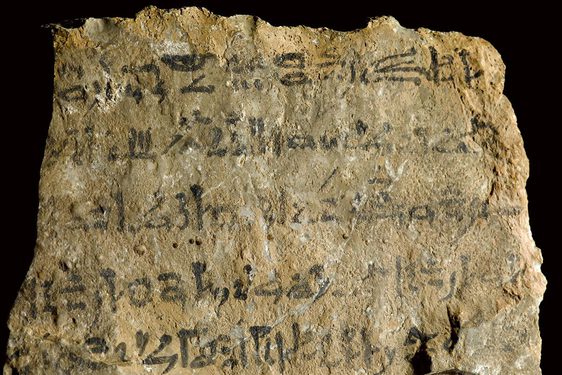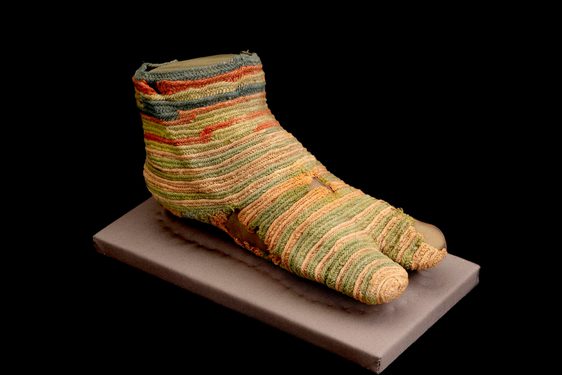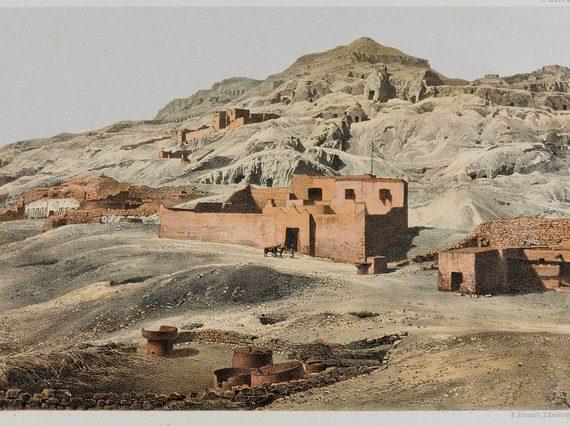
The Rhind Tomb: 1000 years of ancient Egyptian burial
News Story
The Rhind Tomb, as it is now known, was built around 1290BC and reused for over 1000 years.
It was constructed in the great capital city of Thebes (modern Luxor) at the height of the ancient Egyptian empire, just shortly after the reign of Tutankhamun. It was built for a Chief of Police and his wife, and a beautiful statue of the pair is the only surviving object from their burial. It was built onto a courtyard originally created for the tomb of a group of princesses, which contained a masterpiece of ancient Egyptian craftmanship.
As Egypt's wealth declined, several hundred years after the Tomb was built, small, roughly carved chambers were added to the upper level to hold additional burials. Repeated looting over time left behind a jumble of broken coffins and scattered burial items, including stelae and jackal and falcon guardian figures.
The Tomb's final use occurred soon after the Roman conquest of Egypt, when it was sealed intact with the remarkable burial of an entire family. The unique objects from their burials combined new classical influences with traditional Egyptian funerary practices. Most of the family were mummified in plain wooden coffins with vaulted lids, but high official Monsuef was buried in a plain granite sarcophagus. A funerary canopy was used to protect his body during its transportation to the Tomb. Montsuef wore a traditional gilded funerary mask and a classical-style gold wreath. He and his wife Tanuat were buried with unique, personalised funerary papyri dated to 9 BC, which reference their son and daughter.
The Tomb was excavated in 1857 by Alexander Henry Rhind and a team of Egyptian excavators led by foreman Ahmed Abd er-Rasul. However, it was lost again as a village grew up over it. Today we are still learning about ancient Egyptian burial practices through objects found in the Tomb and Rhind’s detailed records of the excavation. Because Montsuef and Tanuat’s burials can be dated to 9 BC specifically, the Tomb’s artefacts are particularly important for understanding and dating other Roman-era funerary objects.
Stories from the Rhind Tomb
- Discover
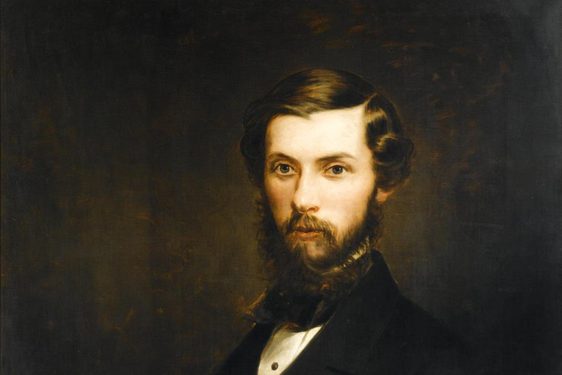
Alexander Henry Rhind: The first experienced archaeologist to excavate in Egypt
Alexander Henry Rhind (1833–1863) was a groundbreaking Scottish archaeologist. His experience excavating prehistoric sites in Scotland informed his innovative work in Egypt. His early death meant that his importance has often been… - Discover
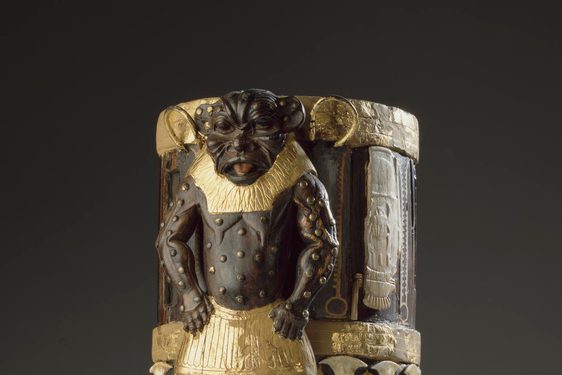
An ancient Egyptian masterpiece: The box of King Amenhotep II
A box inscribed with the name of King Amenhotep II is one of the finest examples of decorative woodwork to survive from ancient Egypt. Discover the rich symbolism of the box and how fragments found later helped our understanding of this… - Discover
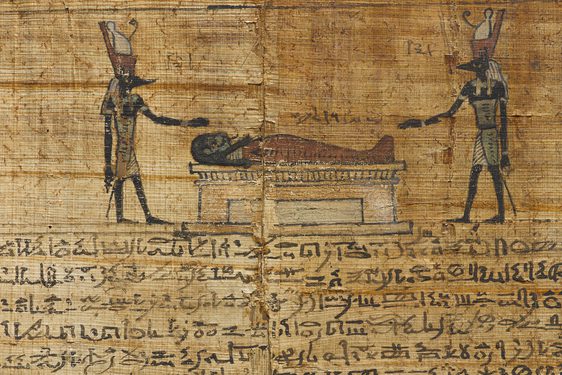
Roman-era personalised funerary papyri
Two detailed funerary papyri date to exactly 9BC, shortly after the reign of Cleopatra, the last pharaoh of Egypt, and the Roman conquest of Egypt. These papyri tell the unique stories of a couple from ancient Egypt. We delve into these… - Discover
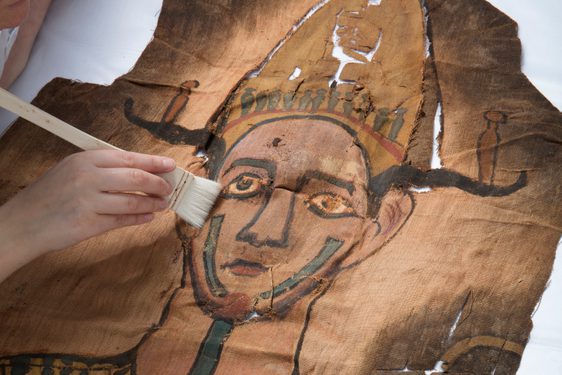
Discovering an ancient Egyptian funerary shroud in museum storage
A unique 2,000 year old Egyptian funerary shroud was discovered in National Museums Scotland’s collections in 2017. This rare find tells us more about the Roman-era period in Egypt and the people who lived there.
Illustrated plans of the Rhind Tomb
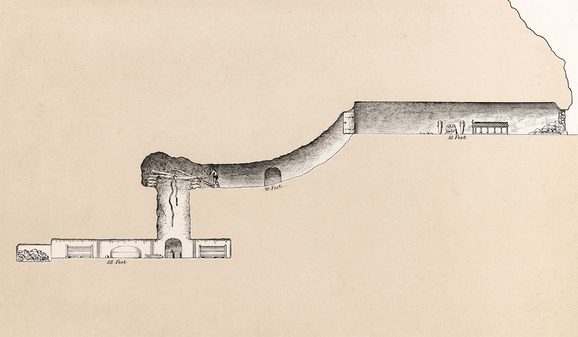
Section plan of the Rhind Tomb from Thebes, Its Tombs and Their Tenants by Alexander Henry Rhind (1863), pl. 3.
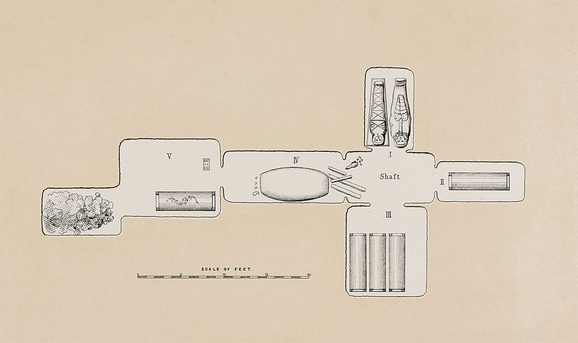
Plan of the lower burial chambers in the Rhind Tomb, from Thebes, Its Tombs and Their Tenants by Alexander Henry Rhind (1863), pl. 5.
Objects found in the Rhind Tomb
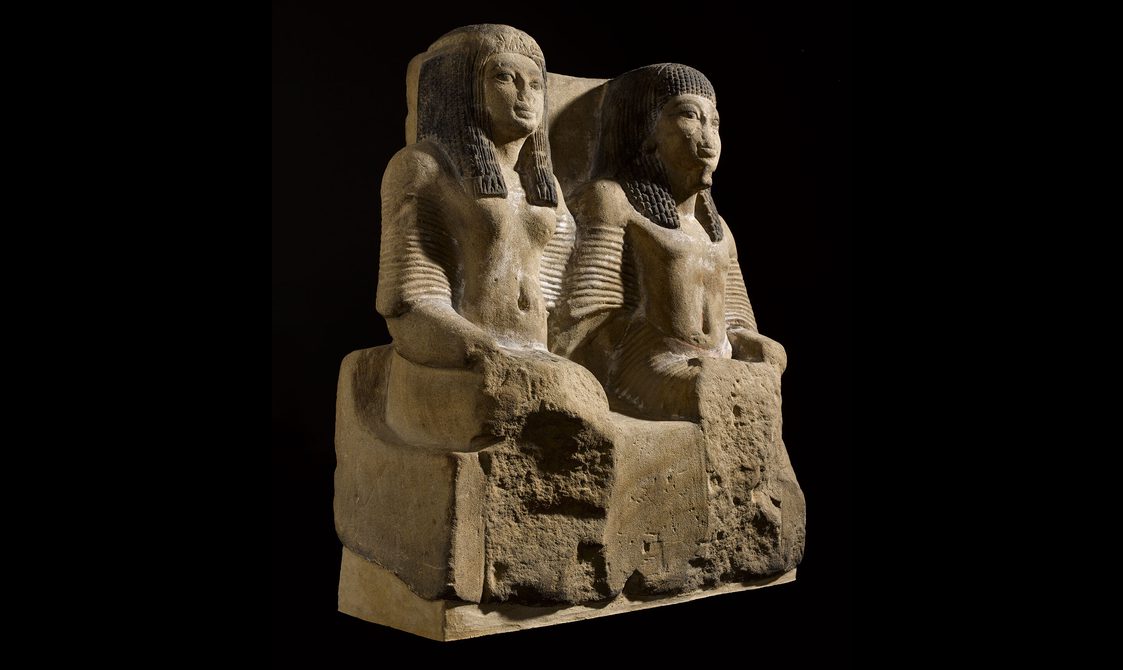
Sandstone statue of a Chief of Police and his wife, Rhind Tomb, Thebes, Egypt, c.1323–1279 BC. Museum reference A.1956.143.
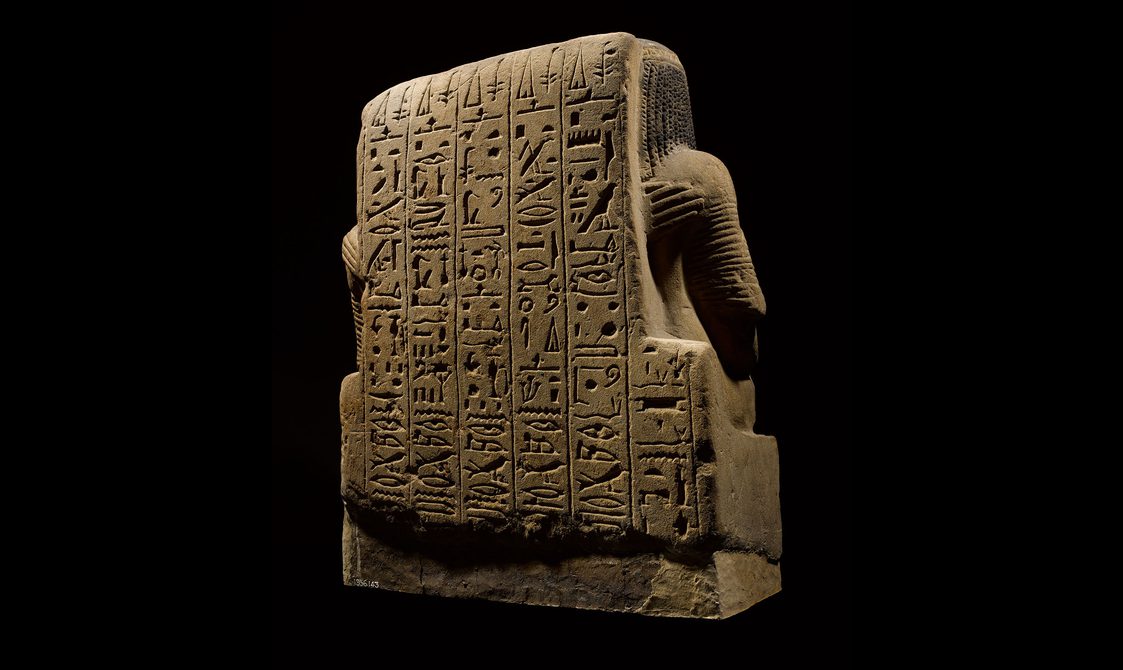
Reverse of sandstone statue of a Chief of Police and his wife, Rhind Tomb, Thebes, Egypt, c.1323–1279 BC. Museum reference A.1956.143.
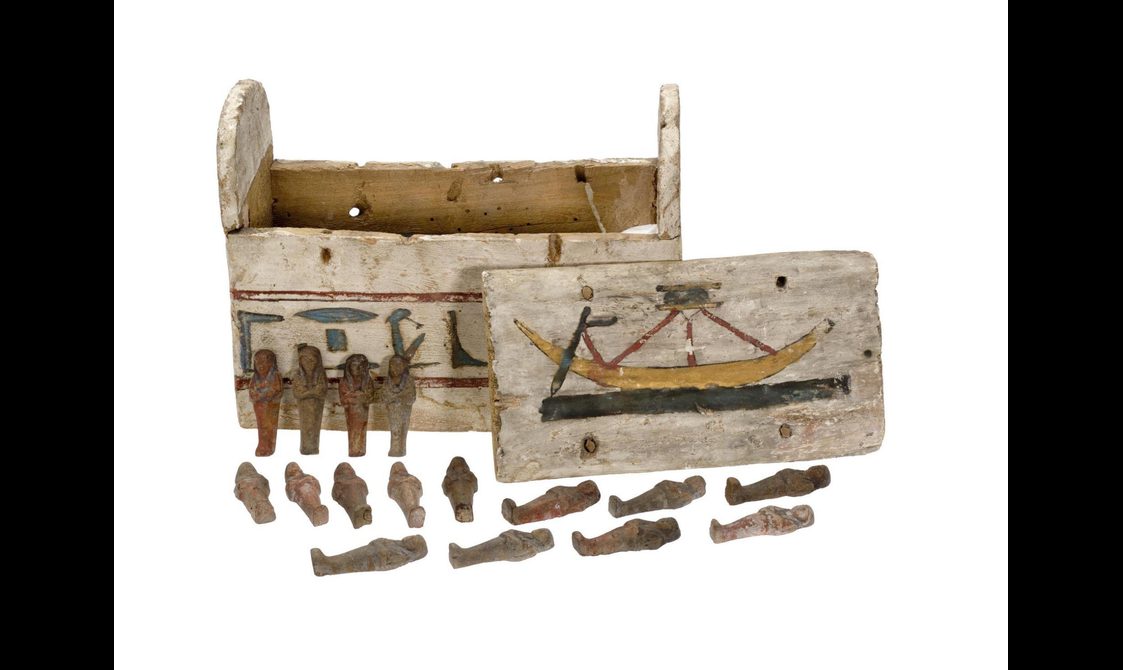
Wooden box containing clay shabtis, Rhind Tomb, Thebes, Egypt, c.747–656 BC. Museum reference A.1956.286 + A-B.
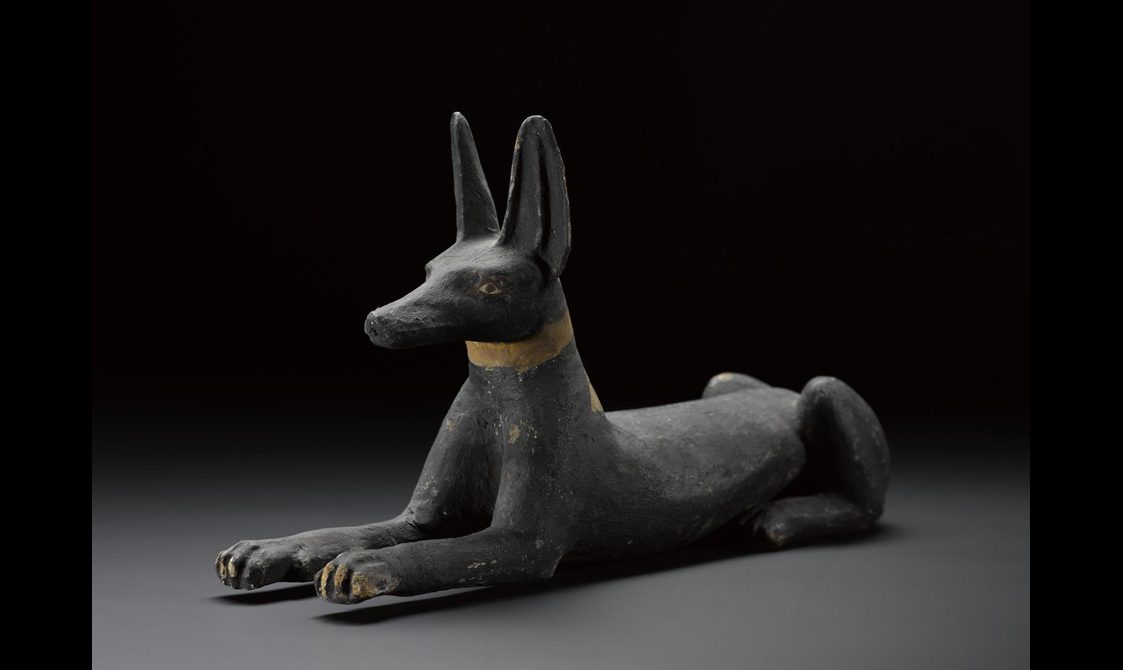
Wooden guardian jackal figure, probably from the lid of a qrsw-coffin, Rhind Tomb, Thebes, Egypt, c.747–525 BC. Museum reference A.1956.181.
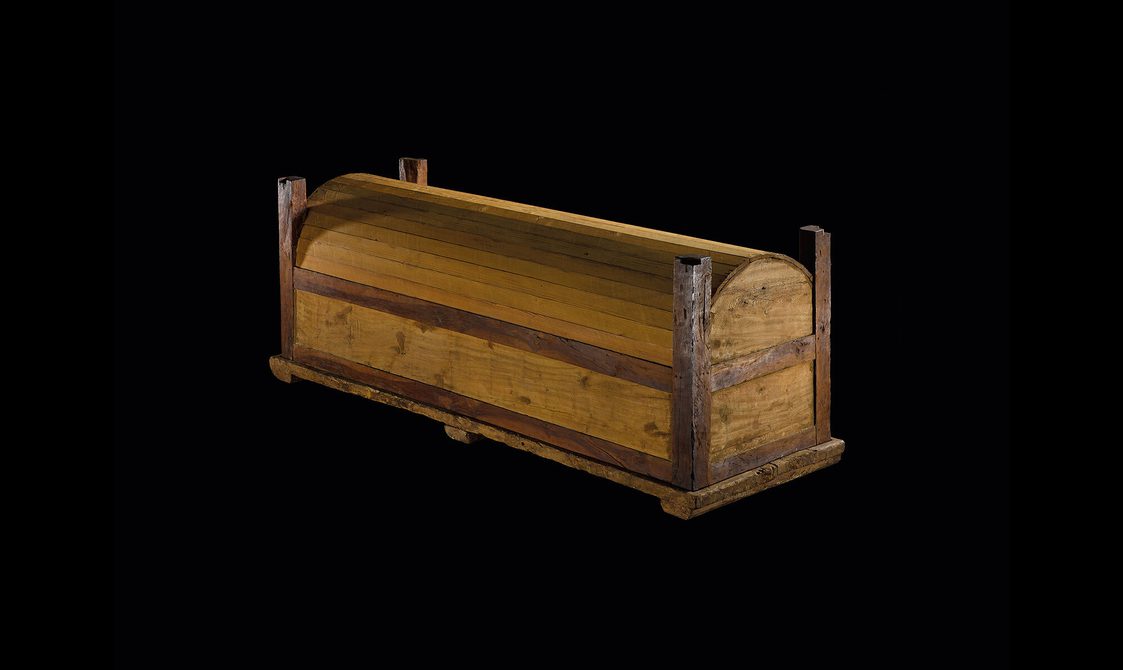
Wooden coffin of Kalasiris, Rhind Tomb, Thebes, Egypt, c.30 BC–AD 10. Museum reference A.1956.351 + A.
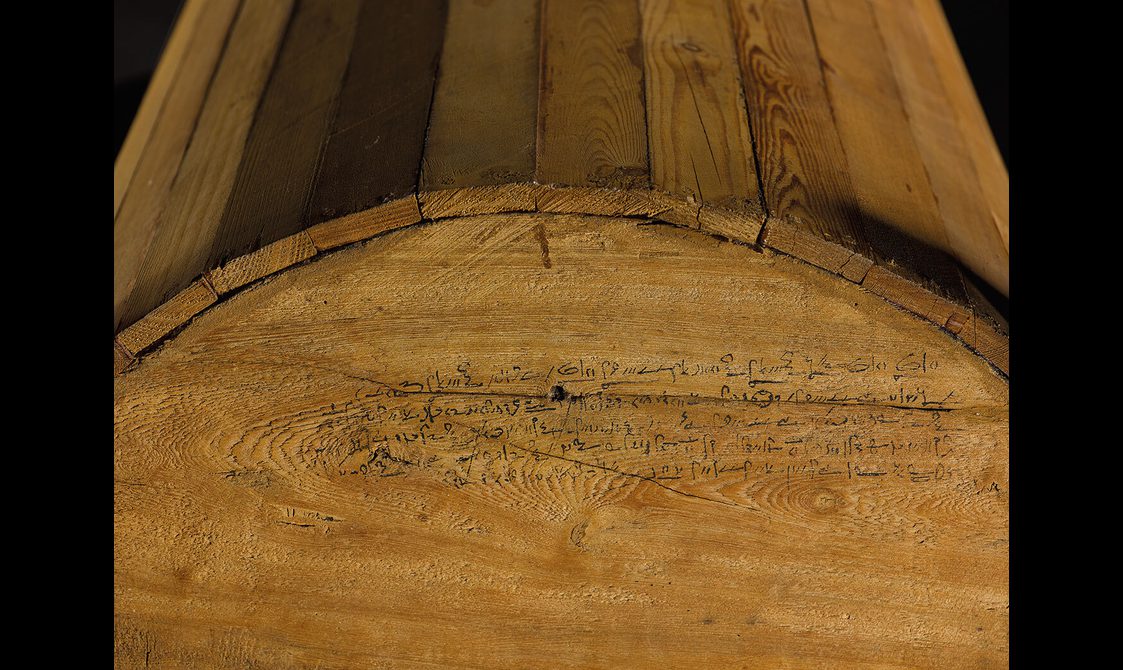
Hieratic inscription on the wooden coffin of Kalasiris, Rhind Tomb, Thebes, Egypt, c.30 BC–AD 10. Museum reference A.1956.351 A.
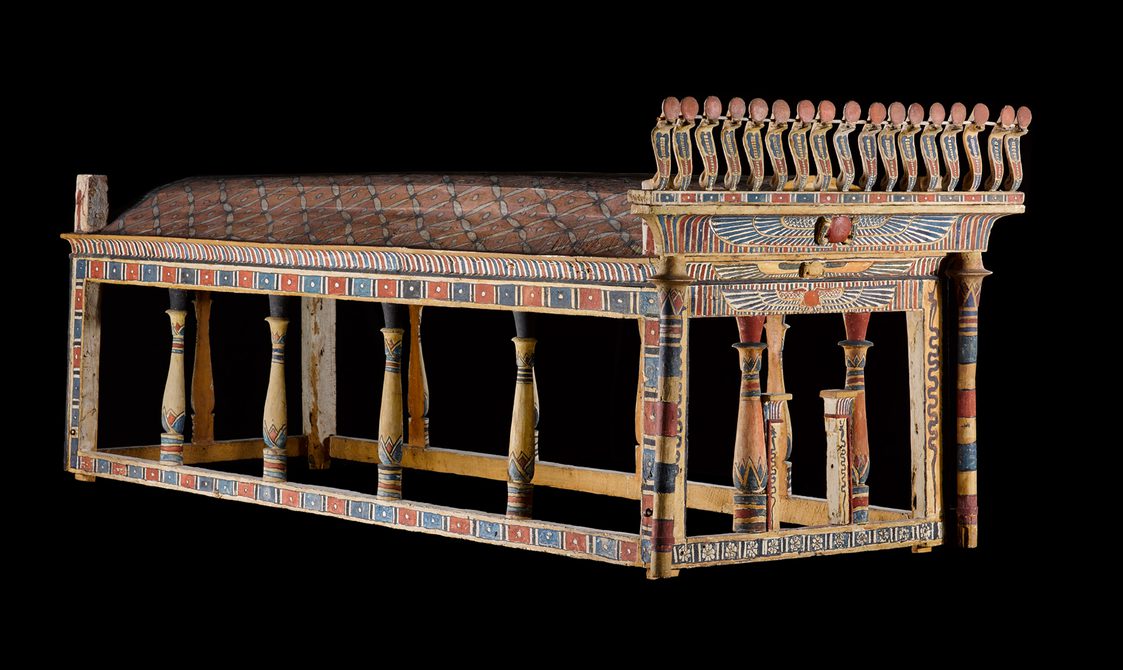
Wooden funerary canopy of Montsuef, Rhind Tomb, Thebes, Egypt, 9 BC. Museum reference A.1956.353.
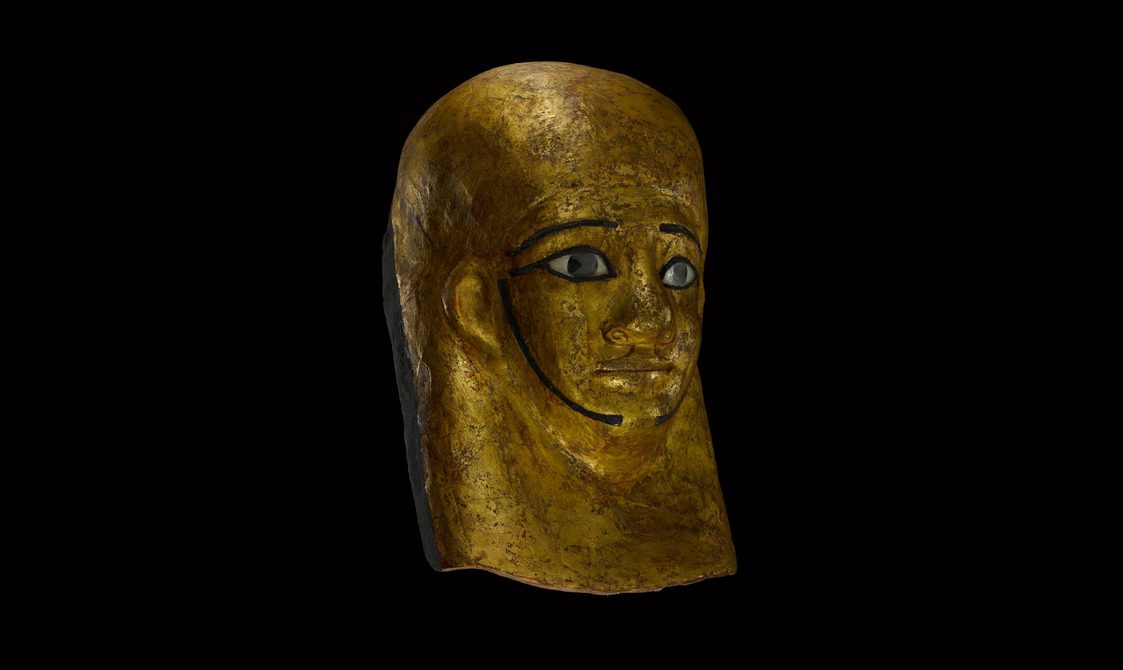
Gilded funerary mask of Montsuef, Rhind Tomb, Thebes, Egypt, 9 BC. Museum reference A.1956.191.
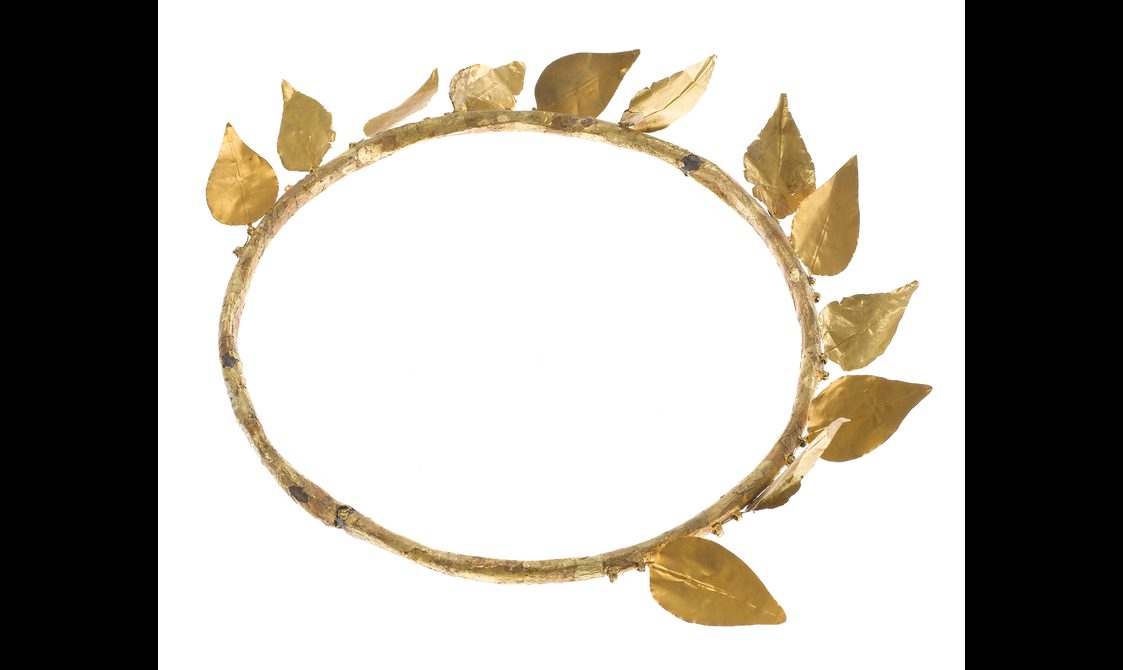
Gilded wreath of Montsuef, Rhind Tomb, Thebes, Egypt, 9 BC. Museum reference A.1956.192.
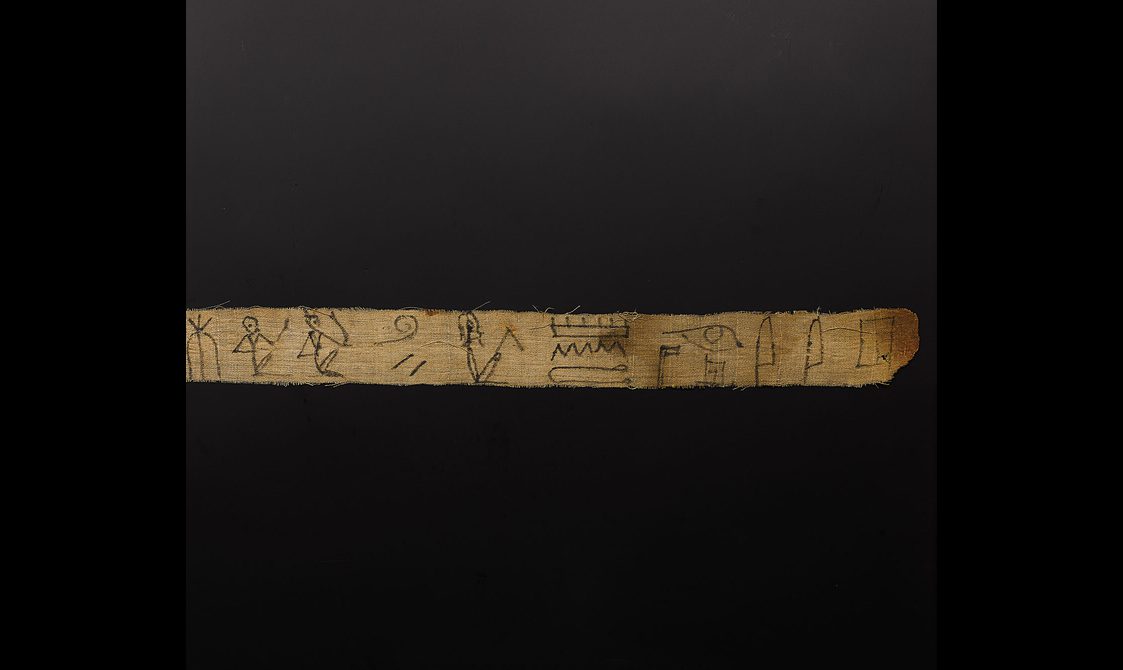
The first of twelve fragments of a funerary bandage inscribed for Montsuef in hieroglyphs, Rhind Tomb, Thebes, Egypt, 9 BC. Museum reference V.2013.48.8.
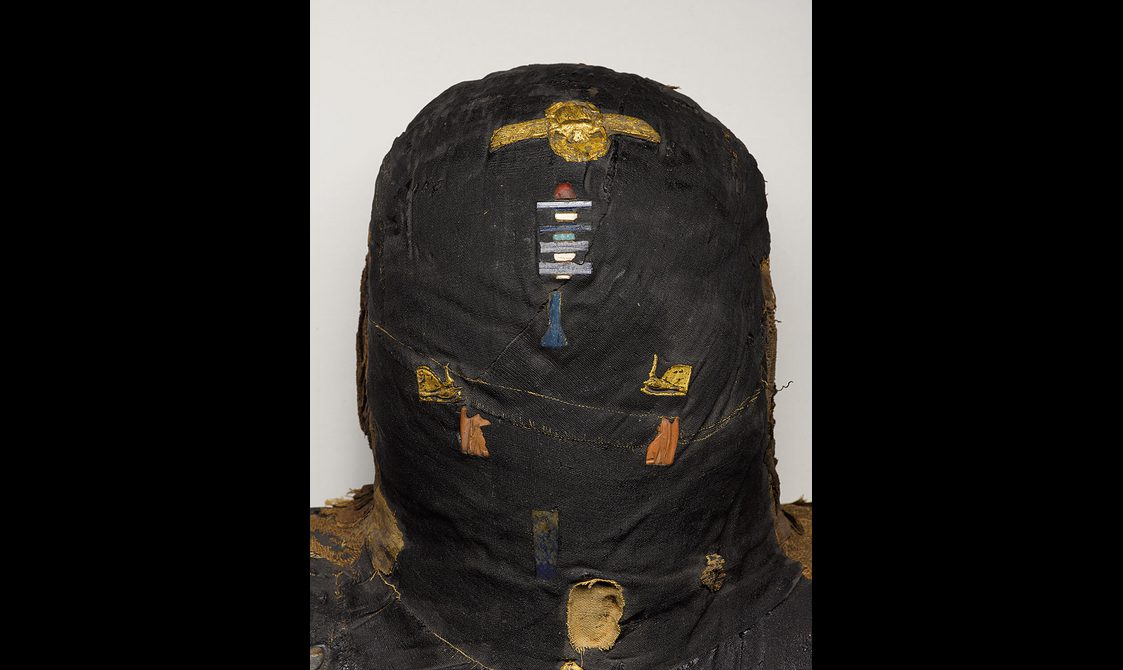
Detail of the head of a mummified woman from the family of Montsuef and Tanuat, possibly their daughter, covered in a mixture of beeswax and resin embedded with amulets of mixed materials, Rhind Tomb, Thebes, Egypt, c.20 BC–AD 10. Museum reference A.1956.352.
